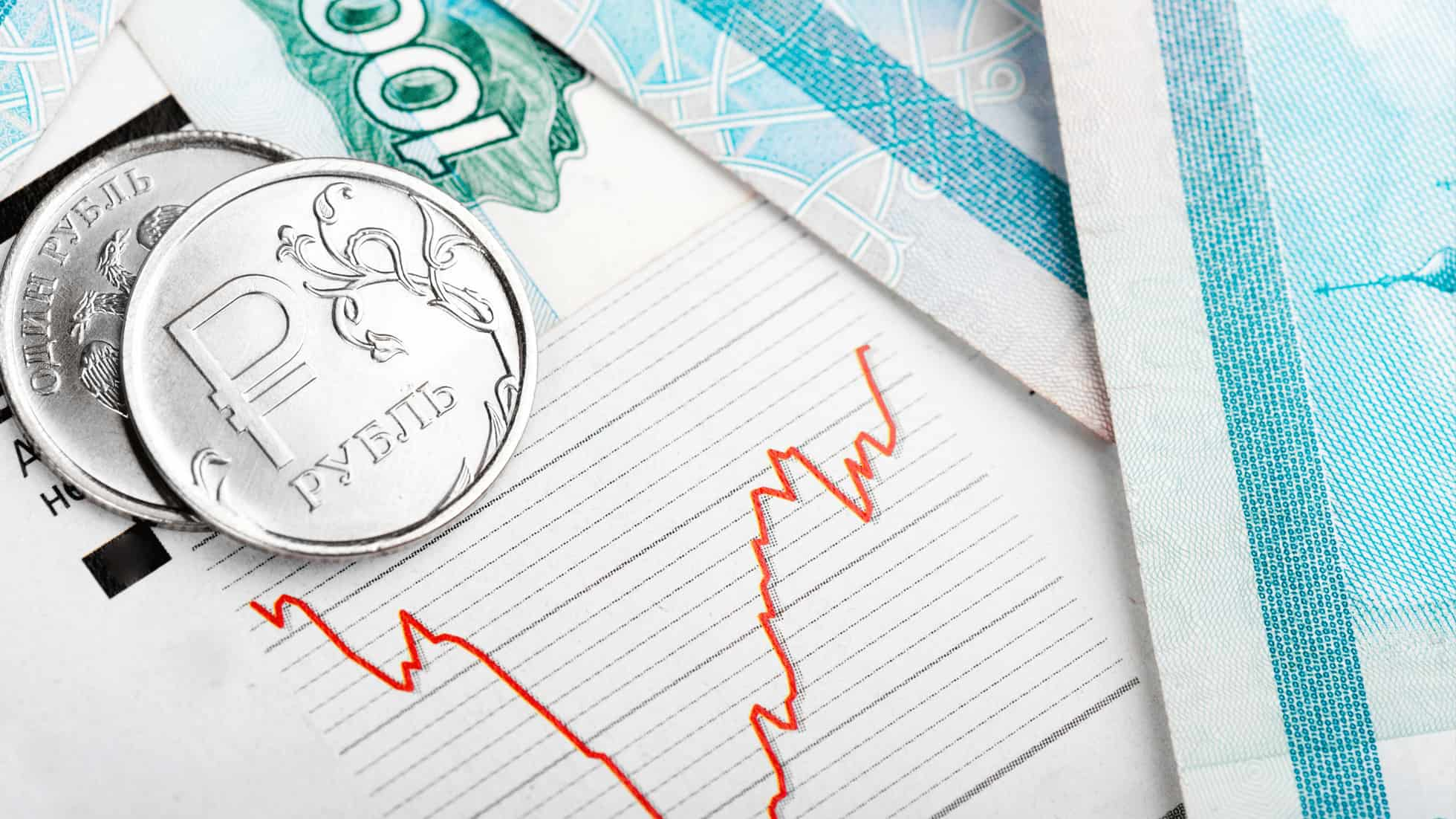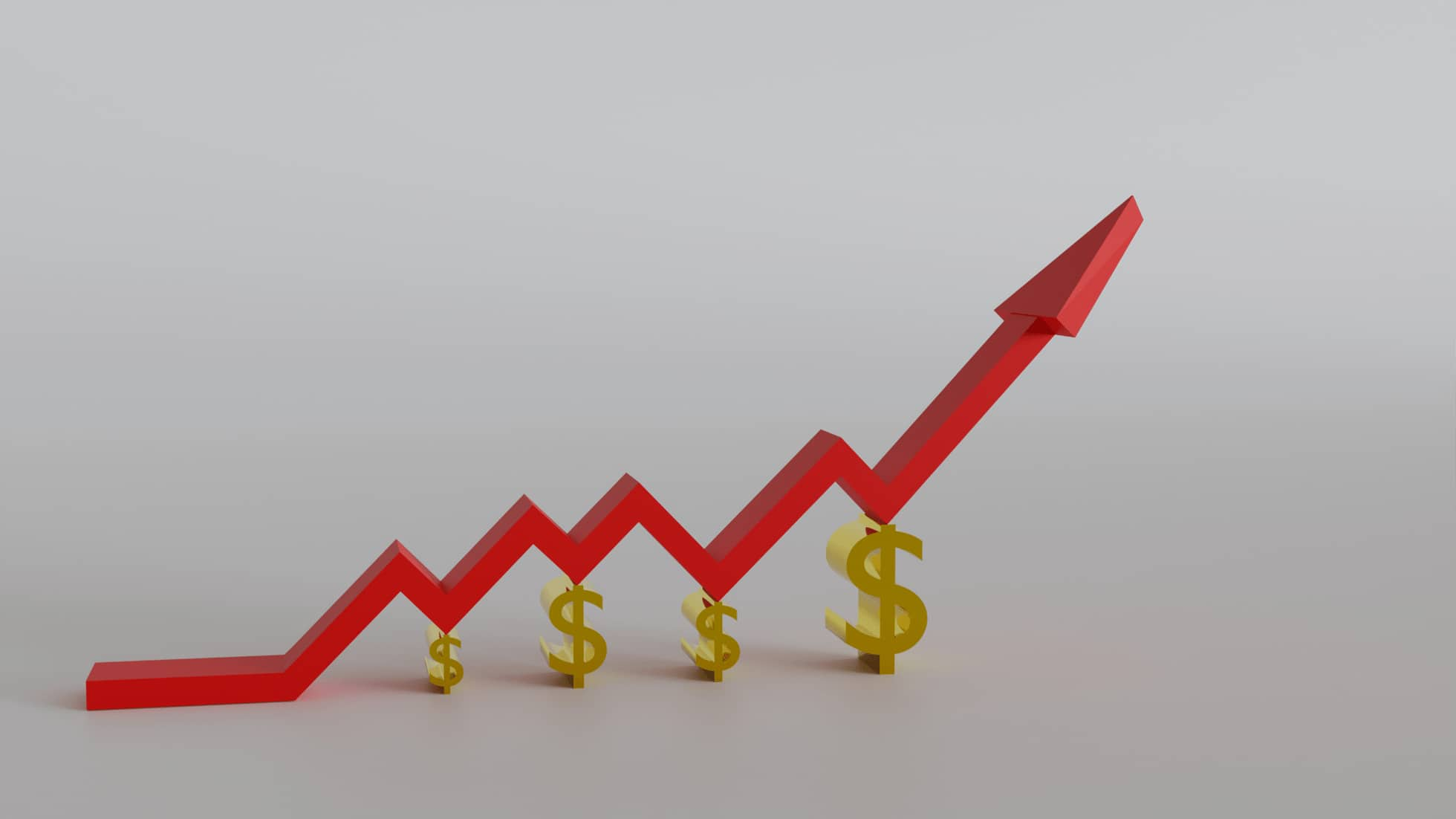If you're an Amazon seller, maximizing your profits is likely one of your top priorities. Whether you're just starting out or have been in business for a while, there are always new strategies and techniques you can use to increase your revenue. In this article, we'll explore some of the most effective ways to maximize your profits on Amazon.
Unlock the secrets to Amazon's maximize profit, transcending beyond basic selling tactics to explore innovative strategies that promise not just to sustain but significantly boost your business revenues.
Whether you're a budding entrepreneur or a seasoned seller, this guide holds the keys to refining your approach, cutting unnecessary costs, and driving sales like never before. Dive into our expert insights and transform your Amazon venture into a profit powerhouse.
Ready to take the leap? Keep reading to discover how.
What Is Amazon Profit Margin?
When it comes to selling on Amazon, understanding your profit margin is crucial. Your profit margin is the percentage of revenue that remains after all expenses have been deducted. In other words, it's the amount of money you make on each sale.
Most Amazon sellers aim for a profit margin of around 15% to 20%, depending on their category. However, a profit margin of 20% or higher is considered excellent, while a profit margin of 5% or lower is generally not sustainable in the long run.
It's important to note that your profit margin can vary depending on a number of factors, such as the competition in your category, the price of your product, and the cost of advertising. Therefore, it's important to regularly review your profit margins to ensure that you're maximizing your profits.
Here are some tips to help you improve your Amazon profit margin:
-
Optimize your product listings to increase sales and reduce advertising costs.
-
Use Amazon's tools and services to streamline your operations and reduce costs.
-
Negotiate with suppliers to get better prices on your products.
-
Monitor your expenses regularly to identify areas where you can cut costs.
-
Consider expanding your product line to increase sales and diversify your revenue streams.
By following these tips and regularly reviewing your profit margins, you can maximize your profits and build a successful Amazon business.
What Is a Good Profit Margin for Amazon Sellers?
As an Amazon seller, you want to make sure that your profit margin is healthy enough to sustain your business and generate a reasonable income. A good profit margin for Amazon sellers generally depends on the product category, competition, and other factors that affect the cost of goods sold (COGS).
According to industry standards, a profit margin of 20% or higher is excellent, while a profit margin of 5% or less is considered unsustainable for an e-commerce business. However, this may vary depending on your business model, pricing strategy, and other factors.
To calculate your profit margin, you can use the following formula:
Profit Margin = (Revenue - COGS) / Revenue x 100
Where:
-
Revenue = Total sales generated
-
COGS = Total cost of goods sold
For instance, if you sell a product for $50 and it costs you $30 to acquire and ship it, your profit margin would be:
Profit Margin = ($50 - $30) / $50 x 100 = 40%
This means that for every $1 of revenue you generate, you keep $0.40 as profit.
To increase your profit margin on Amazon, you can try the following strategies:
-
Reducing purchasing costs by negotiating better deals with suppliers, buying in bulk, or sourcing products from cheaper markets.
-
Offering a larger product portfolio to attract more customers and increase sales volume.
-
Optimizing your inventory management to reduce storage fees and avoid stockouts.
-
Experimenting with pricing strategies to find the sweet spot that maximizes sales and profit.
In conclusion, a good profit margin for Amazon sellers depends on various factors and varies by industry and product category. By calculating your profit margin and implementing the right strategies, you can maximize your profits and build a sustainable e-commerce business on Amazon.
Maximizing Profits on Amazon
If you're an Amazon seller, maximizing your profits should be one of your top priorities. Here are some strategies to help you optimize your profits on Amazon.
Profit Margin Optimization
One of the most important factors in maximizing your profits on Amazon is optimizing your profit margin. To do this, you need to focus on reducing your costs and increasing your revenue. Here are some ways to optimize your profit margin:
-
Reduce your costs: Look for ways to reduce your costs, such as negotiating better deals with your suppliers, reducing your advertising costs, and optimizing your inventory management.
-
Increase your revenue: One way to increase your revenue is by offering upsells and cross-sells to your customers. You can also increase your revenue by offering promotions, such as discounts or free shipping.
Competitive Pricing Strategies
Another important factor in maximizing your profits on Amazon is using competitive pricing strategies. Here are some pricing strategies to consider:
-
Dynamic pricing: This is a pricing strategy that involves adjusting your prices based on market conditions, such as changes in demand or supply.
-
Price matching: This is a strategy that involves matching your competitors' prices to stay competitive.
-
Bundling: This is a strategy that involves grouping together related products and selling them at a discounted price.
Revenue Enhancement Techniques
Finally, there are several revenue enhancement techniques that you can use to maximize your profits on Amazon. Here are some techniques to consider:
-
Amazon Advertising: This is a paid advertising platform that allows you to promote your products on Amazon and increase your visibility.
-
Amazon FBA: This is a fulfillment service that allows you to store your products in Amazon's warehouses and have them shipped to your customers.
-
Amazon Prime: This is a subscription service that offers free two-day shipping on eligible items, as well as other benefits.
By using these strategies and techniques, you can maximize your profits on Amazon and grow your business.
Effective Inventory Management
Managing your inventory effectively is a crucial aspect of maximizing your profits on Amazon. By optimizing your inventory management, you can balance your stock and customer demand, reduce your storage fees, and improve your inventory turnover and cash flow. Here are some tips to help you manage your inventory effectively:
Balancing Stock and Demand
One of the most important aspects of effective inventory management is balancing your stock levels with customer demand. By keeping an eye on your sales data and trends, you can adjust your inventory levels to ensure that you have enough stock to meet customer demand without overspending on storage fees. One way to achieve this is by using the Fulfillment by Amazon (FBA) service. With FBA, Amazon handles your inventory storage and shipping, which can help you optimize your inventory levels and reduce your storage fees.
Reducing Storage Fees
Storage fees can eat into your profits if you're not careful. To reduce your storage fees, you can implement strategies such as:
-
Removing slow-moving or non-performing products from your inventory
-
Taking advantage of Amazon's long-term storage fee waiver program
-
Using FBA to reduce your storage fees and free up your time for other tasks
By reducing your storage fees, you can improve your profit margins and reinvest your savings into other areas of your business.
Inventory Turnover and Cash Flow
Effective inventory management also involves managing your inventory turnover and cash flow. By analyzing your sales data and trends, you can adjust your inventory levels and pricing to ensure that you're making the most profit possible. You can also implement strategies such as dynamic pricing based on demand and competition to maximize your profit margins while remaining competitive in the marketplace.
In conclusion, effective inventory management is essential for maximizing your profits on Amazon. By balancing your stock and demand, reducing your storage fees, and managing your inventory turnover and cash flow, you can optimize your business efficiency and position yourself for long-term success on the Amazon marketplace.
Strategies for Maximizing Profit on Amazon
If you want to maximize your profits on Amazon, there are several strategies you can use to optimize your product listings and improve your Amazon SEO.
Optimize Product Listings
One of the most important things you can do to improve your Amazon sales is to optimize your product listings. This includes using high-quality product images, writing compelling product descriptions, and including relevant keywords in your product titles and descriptions.
Tips for creating high-converting product listings:
-
Use high-quality product images: Make sure your product images are clear, well-lit, and show your product from multiple angles. This will help customers get a better sense of what they're buying and increase the likelihood that they'll make a purchase.
-
Write compelling product descriptions: Your product descriptions should be detailed and informative, highlighting the key features and benefits of your product. Use bullet points to break up the text and make it easier to read.
-
Include relevant keywords: Use relevant keywords in your product titles and descriptions to improve your Amazon SEO and make it easier for customers to find your products.
Amazon SEO and Keywords
Amazon SEO is a critical factor in maximizing your profits on Amazon. By using relevant keywords in your product listings, you can improve your search rankings and increase the visibility of your products.
Tips for improving your Amazon SEO:
-
Use relevant keywords: Use relevant keywords in your product titles and descriptions to improve your search rankings and make it easier for customers to find your products.
-
Optimize your product titles: Your product titles should be clear, concise, and include relevant keywords. Use bullet points to highlight the key features and benefits of your product.
-
Use Amazon's search terms report: Amazon's search terms report can help you identify which keywords are driving traffic to your listings. Use this information to optimize your product listings and improve your Amazon SEO.
By following these strategies for maximizing profit on Amazon, you can improve your product listings, increase your visibility, and drive more sales on the platform.
Building Customer Trust and Satisfaction
To maximize profits on Amazon, building customer trust and satisfaction is key. Positive reviews, excellent customer service, and managing return rates are all crucial aspects of building trust with your customers.
Encouraging Positive Reviews
Positive reviews are essential for building trust and attracting new customers. Encourage customers to leave reviews by following up with them after their purchase and providing excellent customer service. You can also offer incentives such as discounts or free products for leaving a review.
When responding to reviews, be sure to thank customers for their feedback, address any concerns they may have, and offer solutions if necessary. This shows that you value their opinion and are committed to providing a positive experience.
Customer Service Excellence
Providing excellent customer service is another way to build trust and satisfaction. Respond promptly to customer inquiries and concerns, and go above and beyond to resolve any issues they may have. This can include offering refunds, replacements, or discounts.
Be sure to communicate clearly and professionally with customers, and be empathetic to their needs. By providing exceptional customer service, you can build a loyal customer base and increase the likelihood of positive reviews and repeat business.
Managing Return Rates
Managing return rates is crucial for maintaining customer satisfaction and minimizing losses. Offer clear return policies and make the process as easy as possible for customers. This can include providing pre-paid shipping labels and offering refunds or exchanges.
By tracking return rates and analyzing the reasons for returns, you can identify areas for improvement and make changes to your product or customer service to reduce returns in the future. This can help improve customer satisfaction and increase profits in the long run.
Overall, building trust and satisfaction with your customers is essential for maximizing profits on Amazon. By encouraging positive reviews, providing excellent customer service, and managing return rates, you can build a loyal customer base and increase the likelihood of repeat business.
Leveraging Amazon Marketing Tools
To maximize your profits on Amazon, you need to be strategic with your marketing efforts. Fortunately, Amazon offers a wide range of marketing tools that can help you increase your visibility and drive sales. In this section, we'll explore some of the most effective ways to leverage Amazon's marketing tools to maximize your profits.
Utilizing Amazon Analytics
One of the most important tools in your marketing arsenal is Amazon's analytics dashboard. This dashboard provides you with valuable insights into your customers' behavior, including what they're searching for, what they're buying, and how much they're willing to pay. By analyzing this data, you can optimize your product listings to better meet your customers' needs and increase your sales.
Amazon Advertising
Another powerful tool for maximizing your profits on Amazon is Amazon Advertising. This platform allows you to create targeted ads that appear in search results and on product pages, helping you reach a wider audience and drive more sales. There are two main types of Amazon ads: Sponsored Products and Sponsored Brands.
-
Sponsored Products
Sponsored Products are pay-per-click ads that appear in search results and on product pages. These ads are a great way to increase visibility for your products and drive more sales. To create a successful Sponsored Products campaign, you'll need to choose the right keywords, set a competitive bid, and optimize your product listing.
-
Sponsored Brands
Sponsored Brands are a type of ad that allows you to promote your brand and multiple products at once. These ads appear at the top of search results and feature your logo, a custom headline, and multiple product listings. Sponsored Brands are a great way to increase brand awareness and drive sales for multiple products at once.
In conclusion, leveraging Amazon's marketing tools is essential for maximizing your profits on the platform. By utilizing Amazon Analytics and Amazon Advertising, you can gain valuable insights into your customers' behavior and create targeted ads that drive sales and increase visibility for your products.
How to Calculate Profit Margin on Amazon Sales?
To calculate your profit margin on Amazon, you need to take into account all of the costs associated with selling your products. This includes the cost of the product itself, any shipping fees, Amazon fees, and any other expenses related to running your business.
To calculate your profit margin on Amazon, you need to follow these simple steps:
-
Determine your total revenue: This is the total amount of money you receive from selling your products on Amazon. You can find this information on your Amazon seller dashboard.
-
Calculate your total costs: This includes all the costs associated with selling your products on Amazon, such as product costs, shipping fees, Amazon fees, and any other expenses. You need to be thorough in calculating your costs to get an accurate picture of your profit margin.
-
Subtract your total costs from your total revenue: This will give you your net income or profit.
-
Divide your net income by your total revenue: This will give you your profit margin as a percentage. For example, if your net income is $100 and your total revenue is $500, your profit margin is 20%.
It's important to note that profit margin is not the same as profit. Profit is the actual amount of money you make, while profit margin is the percentage of revenue you keep after deducting all the costs. Therefore, it's crucial to keep your profit margin in mind when making business decisions.
In conclusion, calculating the profit margin on Amazon is a simple process that every seller should do regularly. By understanding your profit margin, you can make informed decisions about your business and work towards maximizing your profits.
Amazon Web Services (AWS) for Sellers
If you're selling on Amazon, you've likely heard about Amazon Web Services (AWS). It's Amazon's cloud platform offering tools to grow your business.
AWS helps cut costs and boost profits with services like Amazon EC2, letting you use cloud-based servers instead of buying costly hardware, and Amazon S3 for storing and accessing your product images and data easily worldwide.
Other AWS features beneficial for sellers include DynamoDB for database needs, Simple Queue Service for messaging, and CloudFront for fast content delivery. AWS makes your operations more scalable and cost-effective, whether you're starting small or expanding big, turning the cloud into a profit-making ally.
5 Steps to Increase Amazon FBA Profit Margin
Running a profitable business on Amazon FBA is not just about the revenue you generate, but the profit you make after accounting for all expenses. To increase your profit margin and improve your bottom line, you can take the following essential steps:
1. Choose the Right Products
Choosing the right products to sell on Amazon can significantly impact your sales volume, profit margins, and overall business growth. You should aim to sell products that are in high demand, have low competition, and provide you with a good profit margin. Conduct thorough market research to identify profitable niches and products that meet these criteria.
2. Optimize Your Product Listings
Optimizing your product listings is crucial for increasing your sales and profit margins on Amazon. Ensure that your product titles, descriptions, and images are high-quality and accurately represent your products. Use relevant keywords and phrases to improve your search rankings and visibility on Amazon.
3. Monitor Your Inventory Levels
Maintaining optimal inventory levels is crucial for reducing storage fees and increasing your profit margins. Monitor your inventory levels regularly and adjust your stock levels based on demand and sales trends. This will help you avoid overstocking or understocking your products, which can lead to unnecessary fees and lost sales.
4. Minimize Your Fulfillment Costs
Fulfillment costs can significantly impact your profit margins on Amazon. To minimize your fulfillment costs, consider using Amazon's FBA program, which offers competitive rates for storage, picking, packing, and shipping your products. You can also negotiate better rates with your suppliers and shipping carriers to reduce your overall fulfillment costs.
5. Optimize Your Pricing Strategy
Optimizing your pricing strategy is crucial for maximizing your sales volume and profit margins on Amazon. Consider using dynamic pricing tools to adjust your prices based on market demand and competition. You can also offer discounts, promotions, and bundles to incentivize customers to purchase your products and increase your sales volume.
By implementing these essential steps, you can increase your profit margins and run a profitable business on Amazon FBA.
Conclusion
In conclusion, maximizing your profit on Amazon requires a combination of strategies that can help you grow your business. Here are some key takeaways to keep in mind:
-
Optimize your product listings: Make sure your product titles, descriptions, and images are accurate and compelling to attract potential customers.
-
Manage your inventory: Keep track of your inventory levels and restock popular items to avoid stockouts and lost sales.
-
Review your pricing strategies: Regularly review your prices to ensure they are competitive and profitable. Consider using dynamic pricing tools to adjust your prices in real-time based on market conditions.
-
Diversify your product portfolio: Expand your product offerings to reach new customers and increase your revenue streams.
-
Bundle your items: Offer bundled items to increase your average order value and encourage customers to buy more.
By implementing these strategies, you can maximize your profit on Amazon and achieve business growth. Remember to regularly review your metrics and adjust your strategies as needed to stay competitive and profitable.
Overall, Amazon is a highly competitive marketplace, but with the right strategies in place, you can succeed as a seller and achieve your business goals.
Scale Insights is an AI-powered rule-based Amazon PPC automation tool that can skyrocket your Amazon business to success. Create campaigns in less than 60 seconds and gain access to powerful analytics with a click of a button! Try a free 30-day trial (no credit card needed), starting at $78 up to $688 monthly. Customized plans are available for up to 2,000 automated ASINs.
Frequently Asked Questions
How can Amazon maximize profitability?
Amazon can maximize profitability by utilizing various strategies such as optimizing product listings, utilizing Amazon PPC advertising, running promotions and discounts, building a brand presence, expanding internationally, and keeping an eye on competitor tactics. By doing so, Amazon can increase sales, reduce costs, and improve customer satisfaction, which ultimately leads to higher profits.
What product has the highest profit margin?
It is difficult to determine which product has the highest profit margin on Amazon, as it varies depending on the product category, competition, and demand. However, products with high demand, low competition, and good profit margins are generally considered to be the most profitable.
What does Amazon profit most from?
Amazon profits most from its e-commerce platform, which includes its marketplace, fulfillment services, and advertising. Amazon also generates significant revenue from its cloud computing services (AWS), subscription services (Prime), and other businesses such as Amazon Studios and Whole Foods.
How much do Amazon sellers make a month?
The amount that Amazon sellers make per month varies widely depending on the product category, competition, and demand. According to a survey conducted by Jungle Scout, the average monthly revenue for Amazon sellers is $26,000, with a profit margin of 26%. However, it is important to note that individual results may vary.
How much money can you make on Amazon without selling anything?
It is not possible to make money on Amazon without selling anything. Amazon's revenue comes from the sale of products and services, and it does not offer any programs or opportunities for individuals to make money without selling anything. However, there are various ways to make money by selling on Amazon, such as through private label products, wholesale, and retail arbitrage.



 Scale Insights Team
Scale Insights Team








